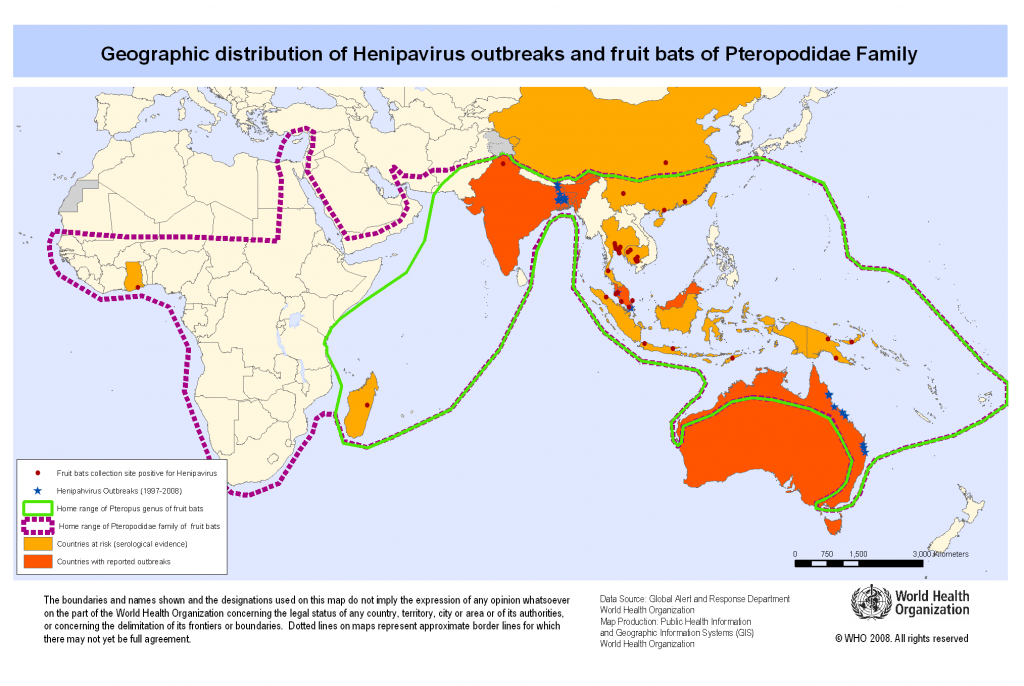How Contagion Really Ends: The Breakthrough Antibody
Have you ever heard of the Hendra virus? What about the Nipah virus? Living in the western hemisphere means you have most likely never heard of either of these viruses. However, you probably heard of the movie “Contagion”, a movie that was released early September of this year. The featured virus of the movie, MEV-1, was inspired by the Nipah virus, both being spread by fruit bats. An antibody against the Hendra virus has been designed (source: http://www.sciencenews.org/view/generic/id/335331/title/Stopping_a_real-life_Contagion), and is in the process of mass production. The Nipah virus invades cells through the same portals as the Hendra virus, and as such, the antibody has the potential to cure both viruses.
The Hendra virus is not known for killing people. Rather, it is better known for infecting and killing horses, with only a dozen people having contracted the Hendra virus, and even fewer dying. Conversely, the Nipah virus, its close cousin, is transmitted from infected pigs, and has infected hundreds of people in south East Asia, with a mortality rate of 40 to 70 percent.
 http://www.who.int/csr/disease/nipah/Global_NiphaandHendraRisk_20090510.png
http://www.who.int/csr/disease/nipah/Global_NiphaandHendraRisk_20090510.png
A team of Canadian and American scientists were testing antibodies for the Hendra virus, and found that a particular antibody, named m102, had the ability to block the Hendra virus from attaching to a cell. The antibody was then modified and, like a drug, mass-produced.
In the Health’s Rocky Mountain Laboratories in Hamilton, Montana, the researchers tested the fruits of their work on 14 African green monkeys. The Hendra virus was squirted into the monkey’s tracheas to infect them with the Hendra virus.
http://www.dawn.com/wp-content/uploads/2011/10/ailing-monkey-r543.jpg
The control group contained two of the infected monkeys, both left untreated. Within eight days, both monkeys were lethally diseased.
The 12 monkeys of the experimental group were given two doses of the m102 antibody within 10, 24, or 72 hours of being infected. All 12 monkeys survived.
The Hendra and Nipah virus use two cell-surface protein transporters to invade cells. The modified m102 antibody binds to these membrane proteins, preventing entry of the Hendra and Nipah virus.
http://frontier.k-state.edu/Images/ResearchAndAnalysis/Updates/OverlapAgents/Henipavirus_lg.jpg
The m102 antibody has already proven successful on fending the Nipah virus in ferrets, with testing on Nipah-infected green monkeys currently underway
With the test on monkeys yielding positive results, the research team now plans to pass the regulations that bar them from human testing. Prior to this, a woman and her daughter had taken the antibody as an emergency treatment to a possible infection to the Hendra virus. While they did not become sick, it is yet unclear whether they were in fact, exposed to the Hendra virus.
The findings of this study are good news to those who live in South East Asia, the most exposed region of the world to the virus. Since 1998, 10 tragic Nipah virus outbreaks have been recorded. The most recent outbreak, in February 2011, resulted in the deaths of 21 infected schoolchildren. Clearly, the Nipah disease is still deadly and prevalent. With all the regulations that the antibody must pass, it may be a while till the antibody is available for public use. While the regulations for human testing and human use serves to protect us from further debilitation or even worse problems, it may hamper the process of making the modified m102 antibody available. In the face of the Nipah virus’ 40-70 percent fatality rate, do the regulations become inconveniences?
Sources:
http://en.wikipedia.org/wiki/Henipavirus
http://www.sciencenews.org/view/generic/id/335331/title/Stopping_a_real-life_Contagion


October 28th, 2011 at 9:44 am
I really enjoyed the movie ‘Contagion’. It really gave me a reality check on washing my hands, not touching my face, and being more hygienic in order to prevent the spread of disease. I did not know the virus in the film was based on an actual virus.
I’m glad, at least, that the real virus is not ravaging the world’s population like it did in the film.
November 7th, 2011 at 6:50 pm
How does this research really apply to us as human? I mean you’ve mentioned that the Hendra virus is not known for killing people, but could it mutate in some way and harm us?
I actually found the research on monkeys quite shocking. Wouldn’t this cause some controversy in its method? By infecting the monkeys with virus for research purposes. Just a little thought.